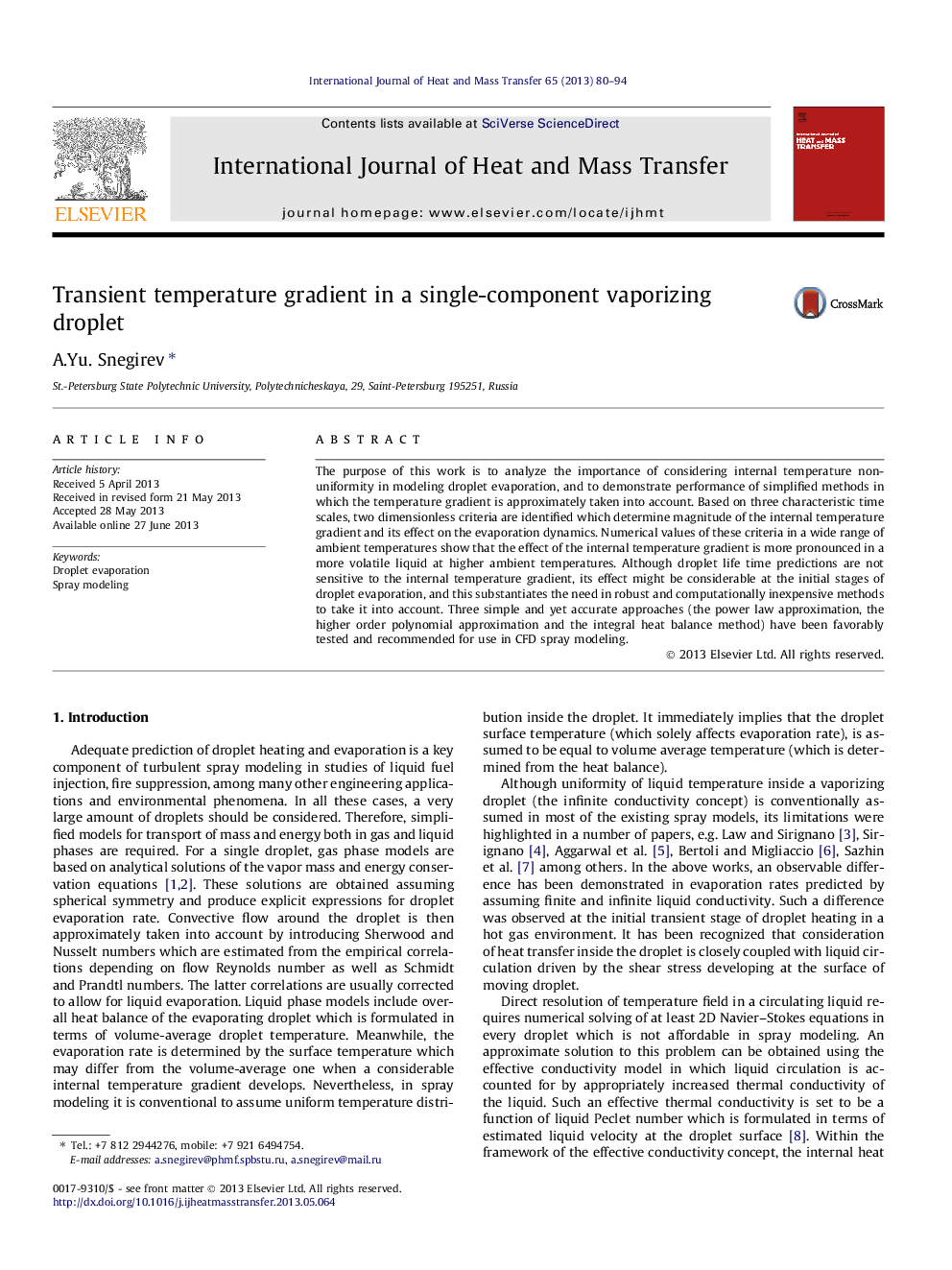| Article ID | Journal | Published Year | Pages | File Type |
|---|---|---|---|---|
| 7058371 | International Journal of Heat and Mass Transfer | 2013 | 15 Pages |
Abstract
The purpose of this work is to analyze the importance of considering internal temperature non-uniformity in modeling droplet evaporation, and to demonstrate performance of simplified methods in which the temperature gradient is approximately taken into account. Based on three characteristic time scales, two dimensionless criteria are identified which determine magnitude of the internal temperature gradient and its effect on the evaporation dynamics. Numerical values of these criteria in a wide range of ambient temperatures show that the effect of the internal temperature gradient is more pronounced in a more volatile liquid at higher ambient temperatures. Although droplet life time predictions are not sensitive to the internal temperature gradient, its effect might be considerable at the initial stages of droplet evaporation, and this substantiates the need in robust and computationally inexpensive methods to take it into account. Three simple and yet accurate approaches (the power law approximation, the higher order polynomial approximation and the integral heat balance method) have been favorably tested and recommended for use in CFD spray modeling.
Keywords
Related Topics
Physical Sciences and Engineering
Chemical Engineering
Fluid Flow and Transfer Processes
Authors
A.Yu. Snegirev,
